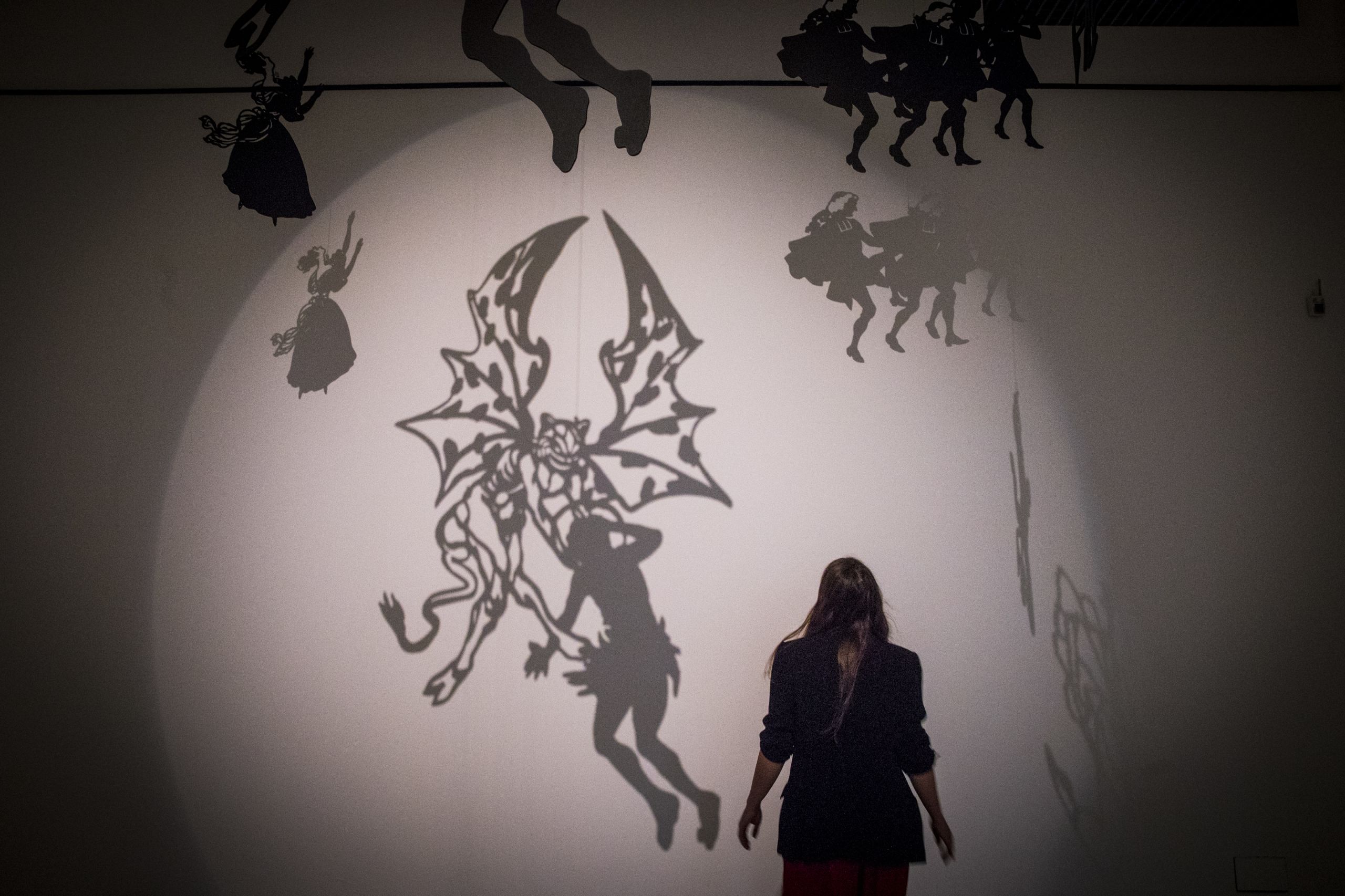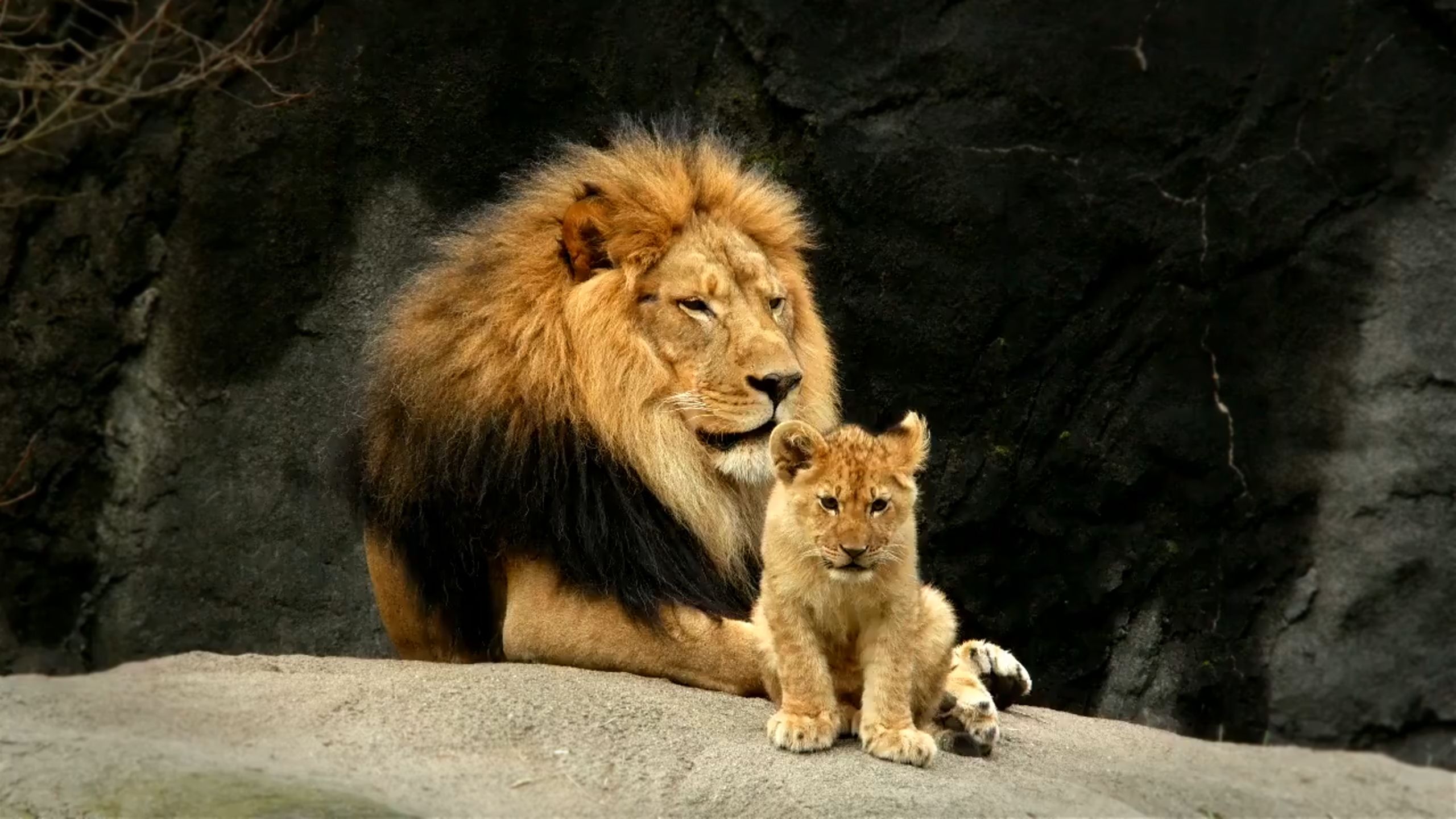Shadow play in the Chat Noir
We take a closer look at the iconic Chat Noir cabaret in the bohemian Montmartre district of Paris, as recreated in Into the Night: Cabarets and Clubs in Modern Art.

While you're reading
Listen to a selection of music from the clubs and cabarets we explore in Into the Night: Clubs and Cabarets in Modern Art.
Founded in 1881, the iconic Chat Noir was the most famous of the new artistic cabarets that emerged in the Montmartre district of Paris in the late nineteenth century. The darkened interior was ornate and immersive, combining faux-Gothic, Neoclassical and Japanese curiosities with whimsical contemporary art. Because of the quantity of and variety of art it contained, the Chat Noir was considered by many of its regulars to be ‘the Louvre of Montmartre.’ Entertainment included poetry performances, improvised monologues, and sentimental or satirical songs.

Enormously popular, the Chat Noir soon moved to a larger venue, where a sign on the door exhorted visitors to ‘be modern’. In 1885, a shadow theatre was installed on the third floor of the new Chat Noir, in a grand room hung with drawings by Edgar Degas, Claude Monet and Henri de Toulouse-Lautrec. There, artist Henri Rivière and his collaborators staged forty increasingly ambitious productions. Using sophisticated machinery and up to twelve technicians, the productions were animated by silhouettes of zinc figures, sometimes with the addition of more detailed props and landscape elements. Light from an open flame was projected from backstage onto the figures, interlaid with hand-painted glass sheets, conjuring complex atmospheric effects. The plays ranged from solemn epics to fairy tales and satires, sometimes including archetypes from the Commedia dell’arte tradition such as the sad clown Pierrot. In L’Âge d’or (The Golden Age, 1887), Pierrot is the tragic victim of his unrequited love for Columbine and in Pierrot pornographe (Pierrot Pornographer, 1893), he goes on trial for creating a painting of Columbine naked.
Between 1887 and 1890, a young Erik Satie was the club’s pianist, where he befriended Claude Debussy, a frequent visitor. The poetic, medievalist aesthetics of the shadow theatre made their way into early compositions such as the Ogives, which Satie advertised in the cabaret’s widely disseminated weekly journal.

Fernand Lunel (attrib.) Interior of the Chat Noir, c. 1889 Ink and wash on paper 22 × 23.5 cm Private collection
Fernand Lunel (attrib.) Interior of the Chat Noir, c. 1889 Ink and wash on paper 22 × 23.5 cm Private collection
The Chat Noir's fame quickly spread beyond Montmartre. The following description of the shadow theatre was published in London art journal The Studio in 1896:
‘It is impossible to forget the great and purely artistic success [Rivière] achieved on the little stage of the Chat Noir with his polychrome ombres chinoises. It formed a delightful spectacle, this life in miniature, evoked from behind the white sheet all alive with gesture and movement … Then there were moon-set scenes and landscapes of oriental night studded with gilded beads as with so much gold-dust, while the deep warm blue of the heavens seemed to quiver with luminous spheres.’
The club’s founder and owner Rodolphe Salis took the shadow theatre company on an international tour in the 1890s, inspiring a generation of young avant-garde artists.

Most art historical sources refer to the Chat Noir as the ‘official’ moment of the artistic cabaret’s inception, launching a genre of highly aestheticized entertainment spaces that would spread across Europe and the world. With this comes an array of stereotypical representations of decadent bohemian characters, including the flaneur and the buveur d’absinthe (absinthe drinker): as curator Ingrid Pfeiffer has argued, ‘virtually no era in modern art history has given rise to as many clichés or been portrayed as frequently as the period around the turn of the nineteenth to the twentieth century in the Parisian district of Montmartre.’
Meanwhile, the club enshrined the eponymous black cat as an enduring symbol of the French cabaret, evoking fierce independence as well as night-time frolics. The poster by Théophile Steinlen announcing the reopening of the cabaret in 1896 has become an popular icon in the 20th and 21st centuries, far outliving the fame of the club itself.

Théophile-Alexandre Steinlen, Réouverture du cabaret du Chat Noir (Reopening of the Chat Noir Cabaret), 1896, Victoria and Albert Museum, London
Théophile-Alexandre Steinlen, Réouverture du cabaret du Chat Noir (Reopening of the Chat Noir Cabaret), 1896, Victoria and Albert Museum, London
Into the Night: Cabarets and Clubs in Modern Art
4 Oct 2019–19 Jan 2020
A journey into the world’s most iconic cabarets, cafés and clubs in modern art through the lens of pioneering artists. This landmark exhibition explores the history of cabarets, cafés and clubs in modern art across the world, from London to New York, Paris, Mexico City, Berlin, Vienna, and Ibadan. Discover works of art, many rarely seen in the UK, as well as life-size recreations of avant-garde spaces.
Watch the Into the Night exhibition trailer:

